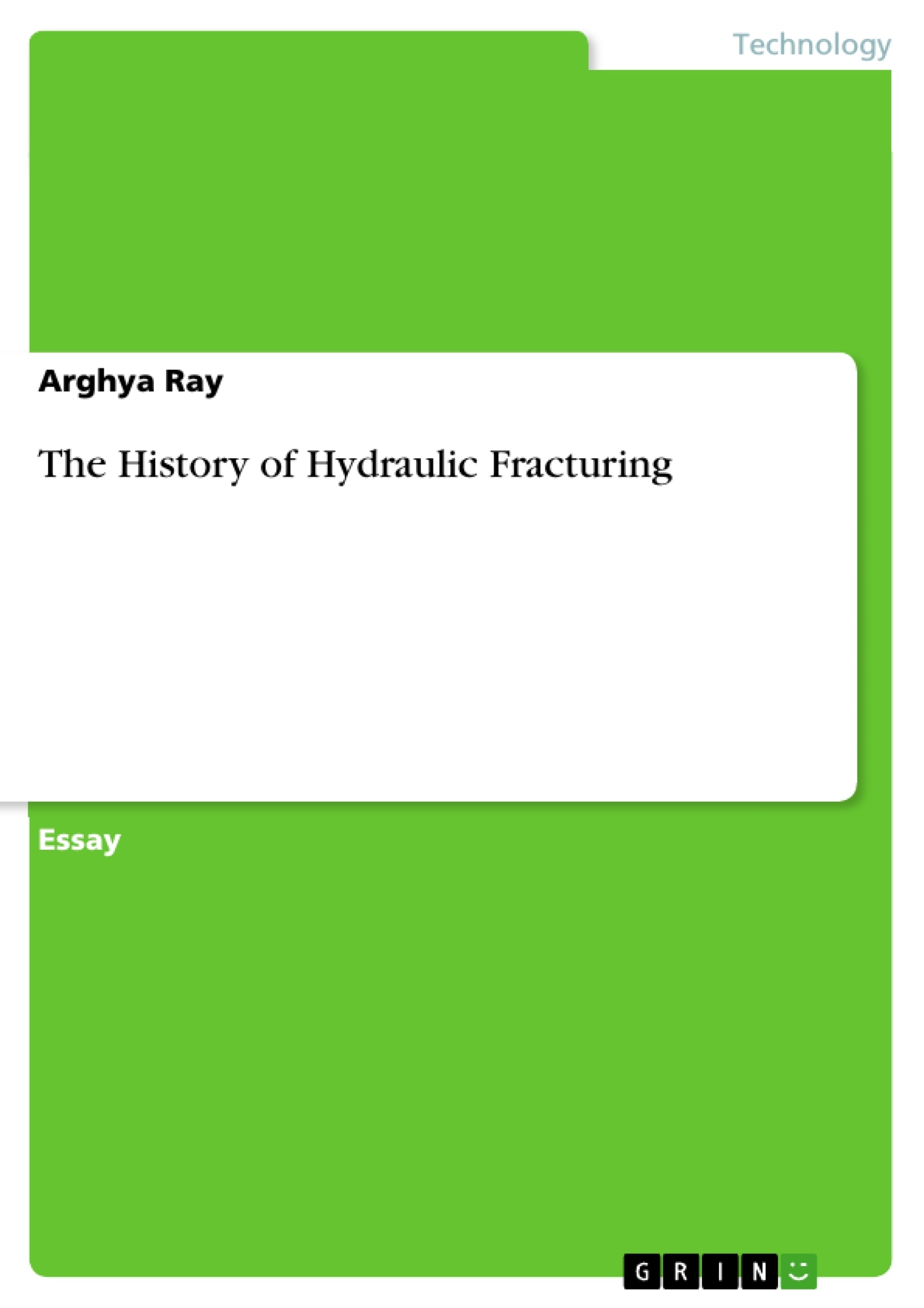Hydraulic fracturing is a sort of engineering technology which has interdisciplinary applications. In USA, hydraulic fracturing has considerably contributed in industrial development. The history of hydraulic fracturing can be divided roughly into three stages: The early stage, the developmental stage, and the present stage. In discussing hydraulic fracturing, technical and industrial issues should be given adequate importance along with the environmental concerns.
The History of Hydraulic Fracturing
Introduction
Hydraulic fracturing is sometimes called hydrofracking, fracing, or simply, fracking. It is a process that initiates and propagates a fracture through the rock layer and helps the engineers to penetrate the earth crust. The technology is regarded to have increased oil and gas production, job opportunities, and all round industrial development in USA. However, it has also got certain bad effects on human health and environment; a fact that is creating trouble for the contemporary policy makers.
The present essay is an informative one, which will put focus on the history of hydraulic fracturing. The essay is written following an almost chronological sequence of the developments regarding the technology under discussion. At first, the historical background of the technology will be discussed. Next, the period of gradual development will be highlighted. After that, the present day scenario mainly focusing the controversies regarding this technology will be reflected on. The conclusion will sum up the findings and inferences.
Background: The Early Stages and a Brief Technical Note
The first industrial application of hydraulic fracturing took place in 1903 (Watson, 1910). Even before that year, the technology was implemented at Mt. Air Quarry to isolate granite pieces and blocks from the bedrock in North Carolina. In 1947, this technology was used for the first time to stimulate natural gas and oil wells in USA. The commercial application of this technology began in 1949. Hydraulic fracturing drastically increased production from the oil wells and this development popularized the technology rapidly. (American Society of Civil Engineers, 2003)
Frost weathering, volcanic sills and dikes, etc. are some of the hydraulic fractures that are found naturally. The technology of hydraulic fracturing entails porous medium flow, fluid mechanics, fracture technicalities, and solid mechanics. The engineering discipline related to this technique deals with the mechanical aspects of civil engineering. Man-made hydraulic fractures driven by fluid dynamics are formed at the profundity of a bore hole and extended to the targeted penetrations and formations. (Howard and Fast, 1970)
Unlike the natural ones, man-made fractures may pose significant risk to environment. Moreover, the process of fracturing is also not without its limitations and bad effects on the environment. However, these facts about the technique were not being investigated during the early stage of its widespread commercial application and development.
Further Application and Development
The application and development of the hydraulic fracturing technology have been rather smooth during the 1960s and 1970s. Grouting of the dam foundations of both soil and rock utilizing high pressure by the means of this technology “has been understood and applied practically since before 1960” (American Society of Civil Engineers, 2003: 2133). However, during and after the 1970s, “it has been known that hydraulic fracturing commonly has occurred inadvertently when borings are drilled in completed embankment dam cores.” (American Society of Civil Engineers, 2003: 2133)
But controversies began to surface in the early 1980s. The seismic effects of applying this technology became a matter of debate and stress measurement in relation to the fracturing process became a serious consideration. Also, reports of failures and erosions due to crack development from man-made hydraulic fractures in dams and embankments were encountered. (National Earthquake Hazards Reduction Program (U.S.), 1983)
- Citation du texte
- Arghya Ray (Auteur), 2011, The History of Hydraulic Fracturing, Munich, GRIN Verlag, https://www.grin.com/document/176959
-

-

-

-
Téléchargez vos propres textes! Gagnez de l'argent et un iPhone X. -

-
Téléchargez vos propres textes! Gagnez de l'argent et un iPhone X. -

-
Téléchargez vos propres textes! Gagnez de l'argent et un iPhone X. -

-
Téléchargez vos propres textes! Gagnez de l'argent et un iPhone X. -

-
Téléchargez vos propres textes! Gagnez de l'argent et un iPhone X.

